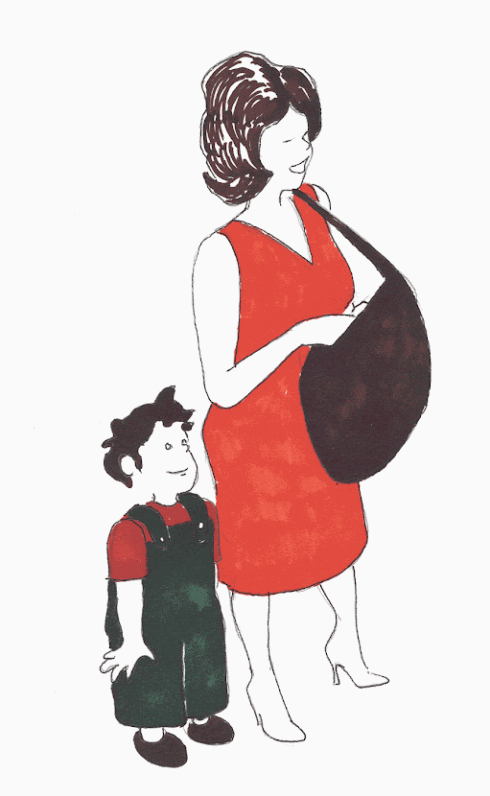Throughout The Bird that Sang in Color, Donna encourages her brother, Vincent to live by society’s conventions. She assumes that because he is single, childless, and works mostly menial jobs, he can’t possibly be happy. She fails to see the internal joy he gets from creating and living life on a truly visceral level until she discovers a book of sketches he made of himself.
The final picture in Vincent’s sketchbook is one of him as a little boy holding his mom’s hand. Donna recalls Vincent telling her that their mom was his best friend. She notices him smiling boldly in this picture. She looks through the all the other drawings in the sketchbook to see that he’s smiling in so many of them. She remembers how easily he smiled in real life, how his smile was so big that it took over his entire face. Through acknowledging his ability to smile so freely, she realizes that he was happy all along. As time goes on, she grows to understand that happiness can only come from within, and that many people who appear to have it all, may be empty inside.
At first glance, it doesn’t make any sense to Donna that this last picture was one of him as a child, when the previous pictures had been in some sort of loose chronological order. Then, she remembers him talking to her about how linear time is only a construct and how there is really no beginning and no end to life. She thinks about the kaleidoscope painting he had made in his teen years. She realizes that the placement of the pictures is telling of how he lived his life—not at all like a straight line from start to finish but more of a never-ending circle.
Although this is the last picture in the sketchbook, I will be sharing more art that inspired this novel in upcoming posts!
This post is part of my latest blog series on the artwork that inspired the family saga, The Bird that Sang in Color. The art featured in these posts comes from a sketchbook that belonged to my brother, Vincent, which I discovered shortly after his death. It had pictures he’d drawn of himself throughout various phases of his life. This pictorial autobiography caused me to wonder what pictures I’d have of myself by the end of my life, which motivated me to live more fully. In writing this novel, I was able to share this powerful realization with the world. This novel is the third book in the Greco Family books. Each one of these novels is told from a different family member’s point of view. This one is told from the perspective of the Greco family matriarch, Donna.




